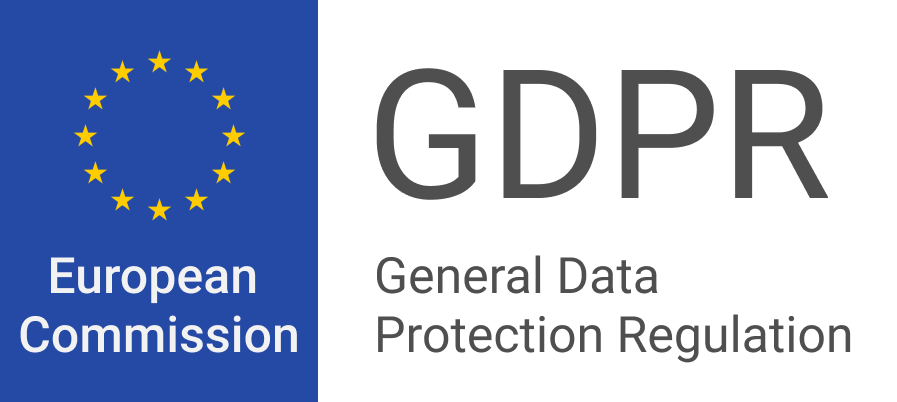Running a plumbing business can be quite challenging. You would have to deal with your main services while attending to administrative work. However, when running a business, you should always keep in mind that time is money.
That’s why you should improve your efficiency so that you can take on more jobs and make profits. You can easily improve your efficiency with plumbing business templates to make estimates, and project proposals and compete for bids.
In this blog post, we will discuss the essential templates that every plumbing business should use to stay ahead of the game.
The Role of Templates in the Plumbing Business
As we said earlier, you should have an efficient system to create estimates, proposals, and bids in your plumbing business. This is where templates would come in handy. Templates are pre-made documents that you can fill in with specific details for each job.
They will help you create estimates, proposals, and bids easily by providing a consistent format in which you must fill out the necessary information. Therefore, instead of starting from scratch each time, you have a ready-made structure to follow. You can quickly fill in the essential details and send them to your customers. It saves time and ensures that all important information is included every time.
Benefits of plumbing business templates
Templates can bring various benefits to your plumbing business. Let’s look at some of the top benefits that will boost your business.
Efficiency and time management
Templates can save you a lot of time, which you can use to do more jobs. Instead of writing out estimates, proposals, and bids from scratch each time, you can simply use a pre-made template. This way, you can quickly fill in the details for each job. It will also reduce the amount of paperwork you have to handle, making your workday less stressful.
Professionalism and consistency
When you use templates, your documents will look consistent and professional so that your clients will take your business seriously. If you can keep your documents consistent, it shows that you are well-organised and reliable. Therefore, it is easy to approach new clients and build your trust in them.
Accuracy and legal protection
As you already know, accurate estimates and proposals are important for any business organisation. When you use a template, you can include all necessary details without missing any critical information. It reduces the chance of errors and avoids misunderstandings and disputes with clients. Additionally, clear and detailed documents can provide legal protection if any issues arise. When you use a template, you can ensure all your paperwork is precise and legally accepted.
Plumbing business template for estimates
First of all, what is an estimate template? It is a pre-made document that helps you calculate and present the total cost of a plumbing job to your clients. It shows the breakdown of all the costs relevant to the job so that clients can get a clear idea of the payments they are about to make.
Key components
- Client Information: Make sure to mention the name, address, and contact details of the client at the top of the estimate accurately.
- Job Description: Give a summary of the job that you are about to do. Make sure to specify your job clearly, whether it is installing new equipment, laying pipes, repairing old equipment, etc.
- Labour costs: This includes the wages you will pay to your workers for their time and effort on the job.
- Materials: All the supplies and parts needed to complete the job, from pipes to fittings.
- Overheads: Additional expenses related to the job, such as travel costs, equipment rental, and insurance.
- Contingencies: An allowance for unexpected issues or additional work that may arise during the project.
- Total Estimate: The sum of all the above costs, giving the client a clear total.
Plumbing business template for proposals
A proposal template is used to present a comprehensive plan for a plumbing project. It should outline the work that will be done, how long it will take, and how much it will cost so that the client can understand the scope and details of the project.
Key components
- Project Scope: A detailed description of the tasks and objectives of the project.
- Timeline: A schedule that outlines the start and end dates, as well as key milestones.
- Deliverables: Specific results and outcomes that the client can expect from the project.
- Pricing: A detailed breakdown of the total cost, including labour, materials, and other expenses.
- Terms and Conditions: Make sure to specify any special terms or conditions related to the project.
Plumbing business template for bids
A bid template is used when you are competing for a plumbing job against other businesses. It helps you present your case as to why your business is the best choice for the project. Therefore, you should showcase your competitive pricing options, your qualifications, and details of the job.
Key components
- Client Information: Make sure to include the client’s name, address, and contact details at the top of the bid form.
- Detailed Project Description: Give a comprehensive overview of the project, including all necessary tasks and requirements. Make sure that it includes an in-depth description of the job.
- Competitive Pricing: A detailed breakdown of your costs, emphasising why your pricing is competitive and offers good value.
- Qualifications: Information about your team’s experience, skills, and past successful projects that make you the right choice for the job.
- Terms and Conditions: Any special terms or conditions related to the bid.
As you can see, each template will serve a different purpose and contain various information. However, there’s something that you should include commonly on all the templates. That is, your brand image, name, slogan, contact details, and your business address.
Customising Templates for Your Plumbing Business
Tailoring templates to specific services
As we discussed before, every template category serves a different purpose. Likewise, a single template of a particular category may not be suitable for all the jobs. That’s why it is important to adapt templates to fit the specific services you offer for each job.
For example, the needs of residential plumbing services can be quite different from those of commercial plumbing services.
- Residential plumbing: For residential jobs, templates should include details about smaller, individual tasks such as fixing leaks, installing appliances, or performing routine maintenance. Make sure to include sections for the client’s home address, the specific area of the house where the work will be done, and any special instructions from the homeowner.
- Commercial plumbing: For commercial projects, templates need to cover larger-scale tasks like installing plumbing systems in office buildings or maintaining systems in commercial spaces. Therefore, make sure to include sections for detailed project scopes, larger teams, multiple phases of work, and compliance with commercial building codes.
Incorporating brand elements
When designing your plumbing business template, make sure to add your brand elements. It will make your plumbing business forms look professional and help to promote your business.
- Logos: Include your company logo at the top of each template.
- Colour Schemes: Use your business colours throughout the template to keep the look consistent with your brand.
- Fonts and Styles: Use fonts and styles that match your company’s branding guidelines.
When the brand elements of your templates are consistent, clients will recognise your business every time they see your documents.
Utilising Software Tools
Several software tools can help you create and manage your plumbing business templates efficiently.
- QuickBooks: This is great for managing finances and generating invoices. You can also create customised templates for estimates and proposals.
- Microsoft Office: You can easily use MS Word and Excel to create and edit templates. It has limited but good design tools to make your templates look professional.
- Field Service Management Software: There is special software to help field service businesses like plumbing services with administrative work. They can help businesses create templates, manage and handle projects, communicate with clients and teams, etc. i4T Business is the perfect example of such software that can be great plumbing company assets.
Best practices for using plumbing business templates

Regular updates and revisions
It’s important to keep your templates up-to-date. The plumbing industry and your business are always changing, so your templates should reflect these changes.
- Industry standards: Make sure your templates follow the latest industry standards. Therefore, make sure to consider new regulations, safety guidelines, and best practices when designing templates.
- Business changes: Update your templates to include new services, pricing changes, or updated company information so that your plumbing business forms are accurate and up-to-date.
Training staff
All your employees should know how to use and customise the templates. Make sure to give thorough training to ensure that everyone can create professional and consistent documents. Let’s look at how you can do this:
- Training sessions: Hold regular training sessions to teach your staff how to use the templates. This includes how to fill them out correctly and how to make necessary adjustments.
- Guidelines: Provide written guidelines or manuals that employees can refer to when using the templates. This is ideal to answer common questions and provide step-by-step instructions.
Client communication
Presenting estimates, proposals, and bids to clients clearly and professionally can make a big difference for your business. Therefore, make sure to consider the following when presenting yourself.
- Clarity: Make sure your templates are easy to read and understand. Don’t use any technical jargon that clients might not understand.
- Transparency: Be transparent about costs and timelines. This builds trust and helps avoid misunderstandings.
- Professionalism: Always present your documents neatly and professionally. Make sure that you use clean, well-organised templates with your brand elements.
Conlcusion
As you can see, plumbing business templates can help your business in several ways.
The key advantage of using templates is that you can improve your efficiency and save more time to do more jobs.
On the other hand, you can minimise errors, make your plumbing business forms consistent, and look professional. Keep in mind that one template doesn’t suit all jobs. Make sure to design separate templates for estimates, proposals, and bids.
Even then, you should customise certain information in the template according to the job. Make sure to follow the best practices we discussed earlier to keep your templates more professional and approach more clients.
If you need software support to handle plumbing service templates, make sure to consider an all-in-one software like i4T Business. It is a job management software, designed to help field service businesses.
With i4T Business, you can easily do administrative work and keep your plumbing contractor documents consistent and accurate. Reach out to our team to get your free trial today.
Our software can help you to design more professional, approachable, and consistent plumbing business templates.
FAQs
An estimate provides a rough idea of the cost of a plumbing job based on initial information. A bid is a detailed and fixed price proposal submitted in response to a request for bids, often for larger projects.
To ensure accuracy, include all possible costs, such as labour, materials, overheads, and contingencies. Use historical data from similar jobs and regularly update your price lists.
Update your templates at least once a year or whenever there are significant changes in industry standards, material costs, or your business operations.
Clearly state in your templates that any changes in project scope will require a new estimate or bid. Provide a process for clients to request changes and for you to approve and document these changes.
Collect detailed information about the project, including the client’s needs, the specific location of the work, any existing issues, etc. Also, ask about the timeline for the project and any budget constraints.
Hot off the press!

Field Service Management sector operates, the i4TGlobal Team loves to share industry insights to help streamline your business processes and generate new leads. We are driven by innovation and are passionate about delivering solutions that are transparent, compliant, efficient and safe for all stakeholders and across all touch points.










